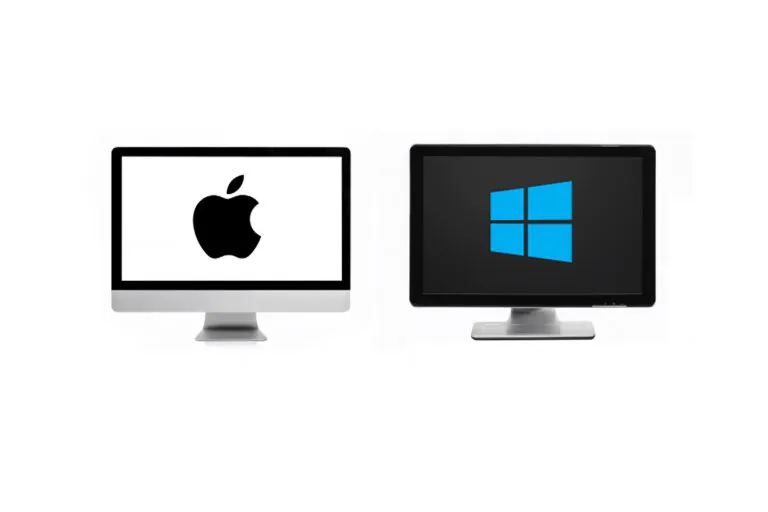Choosing the Right WordPress Theme
Templates help us to create all kinds of documents quickly and simply with a professional finish. In this, WordPress is no different. It offers many different templates – or “themes” – which form the basis of your website. But with so many themes to choose from, how do you choose the right theme for your site?
A WordPress theme will usually give you the bare bones of your website (several page layouts, fonts, tools, etc.). You can then use WordPress to add your own copy and images to the theme and create the website you want.
Choosing a theme that closely matches what you want will help you to build your website faster and require less customisation and coding on your part. However, keeping customisation to a minimum also means that your website will be more recognisable as a WordPress template and will look similar to other websites that have been built using that theme. We’ll come back to this point later.
To begin with, it’s important to stress the importance of having a plan.
1. Have a clear idea of your objectives before you start
Write a wish list of everything you want from and on your website.
Which features do you want? How do you envision the layout? Do you need social media integration? Is it going to be heavily image based, or text based?
The more you think about what you want, and the clearer idea you have in your head (or, preferably, on paper) before you start, the better able you will be to compare the templates available against your ideal.
Keep referring back to your original plans as you work through this process. It’s fine to adapt and change your ideas as you become more aware of what is possible and available, but do refine these changing ideas with a clear reference to your original objectives.
2. To Pay or Not to Pay?
The first thing you need to consider when choosing a theme is whether or not you want to pay for it.
WordPress offers a number of free themes to choose from: https://wordpress.org/themes/
While these free themes are perfectly adequate, you might find that by investing in a paid-for theme offers you additional features or support that you do not get with the free themes.
Browse the free themes first, but do check carefully about the frequency with which they are updated and the level of support you can expect
3. What Support Is Offered?
If you can’t find a theme that comes with the support you need, then investing a small amount of money (typically anything from the $19 to $199 mark) can work out better in the long-term. However, check carefully – even with the paid-for themes – that they are updated regularly and come with the level of support you need – it isn’t always the case that you have access to 24/7 email or phone support just because you purchased your theme.
Especially if you’re new to WordPress, having access to 24/7 email support from your theme developers could be the most important success criteria.
4. Responsive Is Not Optional
With more and more online traffic taking place from mobile devices, choosing a responsive theme is no longer optional: it’s essential.
Most themes claim to be responsive, but some are more responsive that others. At the very least check the demo theme from different devices to see if you are happy with the way it displays.
Do this again as you add content to your theme and make sure the theme is working for you across devices and browsers.
This advice from Google can help: https://developer.chrome.com/blog/devtools-tips-19/
5. What Type of Website Are You Building?
You can refine your theme search according to the type of website you are building e.g. magazine type theme, business theme, travel theme. This can be a useful way of narrowing down your search and finding themes which have been designed to suit your purpose.
However, don’t get too hung up on a theme’s “type” or its name; it’s the features that are important.
Just because a theme has a name such as “Traveller” doesn’t necessarily mean it won’t be any good for a pet shop, for example.
Be aware that choosing a theme designed for your particular purpose does make it more likely that people in your industry might well have already selected the theme. Even after you’ve added your customisation and content, they might look similar.
Instead, you can use these themes as a guide to explore which features you would like on your website (e.g. static home page, custom colours, full-width template, integration with Woo Commerce, translation ready, etc.). Then search for other themes that offer the same features. This way, you can open up a wider set of themes that offer what you need.
6. Clean Look and Feel
Fonts, colours, and images can all be changed easily in WordPress, so try not to get too fixated on these aspects of a theme.
Instead, focus on the page layout(s) it offers and the navigation.
You need to make it easy for site visitors to make their way around your site. For example, menus are a fundamental feature of the theme – focus on this type of feature, rather than the colours used on the demo site.
7. Choice of Page Layouts
If your theme offers several standard page layouts, this can be very helpful – especially as your website grows or develops. For example, you might want to use full-width layouts for the main pages, two column layouts for the blog, a gallery layout to display particular products or photos, or a three-column layout if you want to place ads on the website.
Find a theme that offers you the choice of layouts you need.
8. Not Too Feature Heavy
Sometimes choosing a simpler theme can pay off – in terms of faster page loading times and SEO. So be cautious about choosing a theme with lots of bells and whistles that you aren’t going to use.
One of the great things about WordPress is that there are lots and lots of widgets or “plugins” available. You can add these to your site to deliver particular standard sets of functionality (e.g. a sign-up box for your MailChimp newsletter, a rolling update of your Twitter Feed, etc.).
This flexibility means that you don’t have to find a theme that has every feature you want plus a few more besides.
It’s worth browsing the available plugins on WordPress.com and considering which of these you might want to use when selecting a theme: https://wordpress.org/plugins/
If you’ve chosen a theme with support, you can confirm with the theme’s developers that they support the plugins you wish to use.
9. Read the Reviews of Your Shortlisted Themes
Once you have a shortlist of the themes you like, read their reviews and ratings carefully (and how these have changed over time).
You can check reviews on WordPress as well as on other theme marketplaces such as Envato’s Theme Forest:
https://envato.com/
https://themeforest.net/
10. Ease of Customisation
Once you have refined your shortlist down to your absolute favourites, it is probably worth downloading them and comparing how easy it is to make the changes you want. Themes offer varying levels of customisability – some being highly customisable and making it easy to use your choice of fonts, while others might force you into making changes to the CSS or coding with PHP in order to customise the site how you want.
If you can customise the theme to achieve what you want without resorting to CSS or PHP, it will make your life easier, especially if you are a novice.
However, if you have fallen in love with a theme but would like to change fonts or colours which the theme doesn’t support by default, making changes to the CSS can be easier than you think. We offer a beginner’s WordPress course which includes guidance about how to make changes to the CSS and achieve the look you want.
The course has been designed as a great way to gain confidence before you begin creating your website using WordPress.
11. Clean Code and Fast Loading Speeds Help with SEO
If you want your website to be found online, one of the most important considerations is going to be SEO. However, it can be almost impossible for beginners to make informed decisions about this when selecting a WordPress theme.
There are a few things you can do… Check the reviews and see what feedback users have given in terms of SEO and page loading speeds. Check the update history for clues. Search for websites that are already using that theme. Seek the advice of a professional web developer.
However, here, again, Google does offers some support you might find useful:
https://developers.google.com/speed
At the very least, run the demo site of your shortlisted themes through Google’s page speed tool:
https://pagespeed.web.dev/
Or a similar tool by Pingdom: https://www.pingdom.com/product
12. Security
Again, the security a theme offers can be really difficult for a beginner to assess. It might be worth seeking professional help here if you have particular concerns. It is definitely worth reading the reviews and update histories to see where concerns have been raised about the themes, and how they were addressed.
13. Money Back Guarantee
Finally, if you are going to purchase a theme, it’s worth checking whether it comes with a money-back guarantee. Many paid-for themes do offer this (after a 14-day trial, for example). It’s just a little bit of extra peace of mind for you before you take the plunge.
If you are new to WordPress and planning to develop a WordPress site, we do recommend taking a beginner’s course. Just one day’s tuition can help you find your feet and reduce the incline of your learning curve – making the creation process much more enjoyable.






